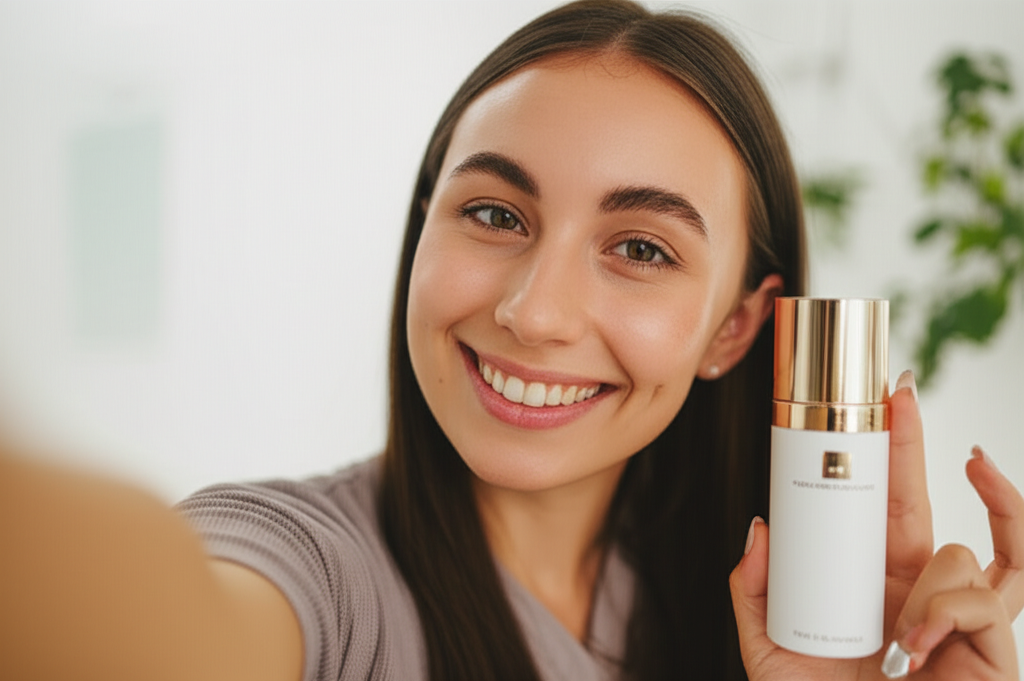The risk is already
out there.
What was once marketing is now a material liability. Unvetted influencer content now sits on balance sheets — unflagged, unaudited, and exposed.Global insurers all underwrite portfolios filled with narrative risk that's never been quantified.InfluencerDD closes the gap: historical audits, FTC/SEC training, and governance-grade assurance.If it can't be measured, it can't be priced. If it can't be priced, it can't be insured.

"Influencer XYZ, brand ambassador for GlowSkyn, posts a sponsored video: 'I use this every day to clear my eczema. It changed my life.'"

"Plaintiff lawyers cite the 2017 video as evidence in a class action. The product is now banned by the FDA. GlowSkyn is named as a defendant."
"GlowSkyn has no documented audit trail. No training. No disclaimers. No governance."
"The post was from 2017. The lawsuit is in 2026. Context changed — but the liability didn't."
"Memory in the digital age isn't short. It's archived. And it's admissible."
"The one thing that hasn't changed — is the law."
InfluencerDD provides certainty in the face of an unpredictable, decentralized creator economy. It reveals unknown liabilities before they hit the books — perfect for due diligence and insurance underwriting.
M&A buyers don't just buy businesses — they buy every word ever associated with those businesses. InfluencerDD provides a permanent, timestamped record of historical influencer risk, aligning with long-term buy-and-hold strategies.
Why Now
The regulatory landscape is shifting rapidly. Companies that fail to implement proper oversight now will face severe consequences.
Regulatory exposure
The FTC Act and other disclosure laws make companies liable for any influencer tied to their brand. Untrained, unaudited creators are walking legal liabilities.
Global enforcement
The UK's online safety act and the EU DSA prove where the world is headed. The U.S. is next — and class-action lawyers are already watching. Cross-border speech is actionable: just because it was said in Spanish on TikTok doesn't mean it can't trigger litigation in California.
AI amplification
AI-generated content and deepfakes are multiplying influencer output. But brands will still be held liable — not the bots.
Case Studies
Real-world examples of how unvetted influencer partnerships can create massive corporate liability.

Dylan Mulvaney & Bud Light
In April 2023, Bud Light partnered with transgender influencer Dylan Mulvaney for a social media campaign. The partnership triggered an immediate backlash, with insufficient pre-campaign risk assessment and no crisis management plan in place.
Financial Impact
- • $15.7B market cap loss
- • 21% sales volume decline
- • Lost #1 market position
Key Failures
- • No audience alignment analysis
- • No crisis response plan
- • Delayed executive response
Preventable With Proper Due Diligence
InfluencerDD's audience alignment analysis would have identified the mismatch between the influencer's audience and the brand's core customer base, allowing for proper risk mitigation strategies.
Samantha Hudson & Fashion Brand Partnership
In 2022, a major European fashion retailer partnered with Spanish influencer Samantha Hudson without conducting a comprehensive content review. Historical controversial statements resurfaced during the campaign launch, creating immediate backlash.
Consequences
- • Campaign terminated within 48 hours
- • 18% stock price drop
- • Executive leadership changes
Key Failures
- • No historical content review
- • Inadequate cross-cultural analysis
- • No pre-approval content process
Preventable With Proper Content Auditing
InfluencerDD's comprehensive historical content analysis would have identified the problematic statements before the partnership began, allowing the brand to make an informed decision.

Critical Warning: These cases represent just the most public examples. For every headline-making incident, dozens of similar situations occur with smaller brands that don't make national news but are equally devastating to the companies involved.
Investor Liability Exposure
VCs and Private Equity firms inherit the regulatory risk of their portfolio companies' influencer relationships.
Due Diligence Blind Spots
Traditional due diligence often overlooks the hidden liability of past influencer campaigns. Undisclosed relationships and non-compliant content create a ticking time bomb of regulatory risk.
Risk Alert: 78% of PE firms surveyed failed to assess influencer compliance during acquisition due diligence.
Successor Liability
When acquiring a company, investors inherit all previous regulatory violations. FTC and EU regulators have made clear: the acquiring entity assumes responsibility for past non-compliance.
Legal Precedent: In FTC v. Wyndham Worldwide Corp, the court held that acquiring companies inherit liability for previous data security violations.
Valuation Impact
Post-Acquisition Surprises
Undiscovered influencer compliance issues have resulted in post-acquisition write-downs of up to 15% when regulatory actions surface after closing.
Representations & Warranties
Standard R&W insurance often excludes known regulatory risks, leaving investors exposed when influencer violations come to light.
The Solution
InfluencerDD provides comprehensive pre-acquisition audits of all influencer relationships, creating a defensible record of compliance due diligence.
Franchise Risk Exposure
When franchisees go rogue on social media, the entire brand pays the price.
Decentralized Risk
Franchisees often operate their own social media accounts, creating thousands of potential compliance violations outside corporate control.
Problem: 73% of franchise systems lack adequate monitoring of franchisee social media activity.
Brand Reputation
A single franchisee's controversial post can trigger nationwide boycotts and brand damage that affects all locations, regardless of ownership.
Impact: Recent franchise social media incidents have resulted in average same-store sales declines of 23% across entire systems.
Termination Challenges
Franchise agreements often lack clear social media compliance provisions, making it difficult to terminate problematic franchisees.
Challenge: Only 31% of franchise agreements contain specific social media compliance requirements with clear termination rights.
Who's Checking? Who's Responsible?
The Monitoring Gap
Most franchise systems rely on reactive complaint systems rather than proactive monitoring. By the time a violation is reported, the damage is already done.
Legal Responsibility
Courts increasingly hold franchisors liable for franchisee social media violations under theories of apparent agency and system-wide brand standards.
The Solution
InfluencerDD provides system-wide monitoring of all franchise social media accounts, with real-time alerts for compliance violations and automated documentation for potential termination proceedings.
Marketplace Consequences
When influencer content violates platform policies, brands face immediate and severe consequences.
Platform Deplatforming
Major e-commerce platforms now monitor influencer content promoting products on their marketplaces. Violations can result in immediate product delisting or complete seller bans.
Real Impact: In 2023, a major marketplace removed over 12,000 products after associated influencers made unsubstantiated health claims, resulting in $43M in lost revenue.
Retail Consequences
Major retailers increasingly include "brand safety" clauses in vendor agreements, allowing immediate product removal if associated influencer content violates their standards.
Case Example: A beauty brand lost distribution in 4,300 retail locations after an influencer's controversial statements, with no prior warning from the retailer.
The New Reality: No Second Chances
In today's marketplace environment, brands rarely receive warnings before action is taken. The first indication of a problem is often a notification that products have already been removed or accounts suspended.
Amazon
Implements immediate account suspensions for influencer content that violates medical claims policies, with an average resolution time of 4-6 weeks.
Walmart
New vendor agreements include "brand reputation" clauses allowing immediate delisting based on associated influencer content.
Target
Has removed entire brand lines within 24 hours of influencer controversies, citing "alignment with company values."
The Regulatory Tsunami
A relentless wave of global regulations is creating unprecedented liability for brands and their influencers.
GDPR Enforcement
European UnionEU's General Data Protection Regulation introduces €20M fines for data misuse, including influencer-collected data.
Legal counsel warning: The pace of regulatory change is accelerating. What was compliant yesterday may create liability tomorrow. Without proper documentation and oversight, your legal exposure grows with each new regulation.
Global Impact
Just because content was created in one jurisdiction doesn't mean the legal consequences won't land in another.
U.S. courts have made clear:
Liability hinges on when content is received and interpreted by the public, not merely where it originated. In the absence of documented editorial oversight, corporations expose themselves to substantial litigation risk — creating fertile ground for the plaintiffs' bar.
The Problem
- Cross-border virality knows no jurisdictional boundaries
- AI-generated content multiplies risk exponentially
- Failure to vet influencers may constitute breach of duty
The Solution
- Timestamped, auditable records of all influencer content
- Risk-weighted analysis for every word ever spoken
- Comprehensive training and oversight protocols
Building the Regulation Layer
Addressing key concerns in this emerging category
Relatively new category
Solution: Think of it like credit scores for user-generated content. Just as FICO brought standardization to lending risk, InfluencerDD brings standardization to speech risk.
Dependence on evolving law
Solution: The momentum is clear with recent FTC updates, EU Digital Services Act, and UK Online Safety Act all pointing toward increased liability for brands.
High growth, unregulated space
Solution: InfluencerDD is building the regulation layer itself, creating standards and protocols before they're mandated by law.
The Geico of Speech Risk
Just as Berkshire saw the insurance moat of Geico — InfluencerDD is building the risk detection and disclosure moat for the influencer age. Every deal. Every underwriter. Every regulator.
Because speech has no border, no expiration date, and no editorial oversight.